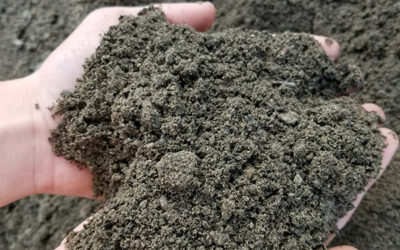Gardens are a great way to add beauty and character to your home, but many homeowners don’t realize the impact that mulching can have on their outdoor spaces. Mulch is an essential part of any garden’s health, providing vital nutrients for plants while preventing weeds and soil erosion.
With so many types of mulch available, however, it can be hard to know which one is best for your yard. Let’s explore why mulching matters, how to choose the one that’s best for your garden, and tips on how to have a healthier yard.
WHY MULCHING MATTERS: FROM WEED CONTROL TO MOISTURE RETENTION
One of the primary benefits of mulch is that it helps protect your plants and flowers from weed growth. Without mulch, weeds can quickly take over a flower bed or garden and compete with existing plants for water, nutrients, and sunlight.
Mulch also serves an important purpose when it comes to moisture retention. Mulching your yard helps keep moisture in the soil while helping to prevent evaporation from the sun’s rays.
Additionally, mulch can help regulate soil temperature. This is especially useful for plants that are sensitive to extreme temperatures, as mulch helps the soil retain heat in the winter and keeps it cool in the summer.
RELATED ARTICLE: STREAMLINE HOME RENOVATION OR CLEAN-OUT WITH ROLL-OFF DUMPSTER RENTAL
CHOOSING THE RIGHT MULCH FOR YOUR YARD
There are countless types of mulch out there, and knowing which is best for your yard can be a challenge. Typically, mulch made from organic materials like wood chips, shredded bark, or peat moss is preferred over inorganic materials like plastic or rubber. Certain organic mulches, such as cocoa shells, also contain nutrients that may benefit your plants, like nitrogen and phosphorus.
CLICK TO BROWSE OUR MULCH PRODUCTS
LAYERING YOUR MULCH: HOW TO DO IT RIGHT FOR BEST RESULTS
Once you’ve selected the right type of mulch, it’s time to start layering. Get the most out of your mulching efforts by spreading a layer about two inches thick around your plants. Be mindful not to cover any stems or leaves. You can then top off with another one to two-inch-thick layer for protection from wind and rain. For larger areas, layer in a crisscross pattern to ensure even coverage and support.
Next, water your mulched area lightly to help the mulch settle and prevent it from blowing away in the wind. Doing so also encourages any beneficial microorganisms living in the soil to mix with the mulch and begin their work on breaking it down into nutrients for your plants.
Lastly, keep an eye on your mulch and replenish it as needed. Mulching not only helps conserve moisture and create a nutrient-rich soil but it also prevents weed growth by blocking out sunlight. This means that you’ll need to add more mulch over time in order to maintain its effectiveness.
MULCH YOUR WAY TO A HEALTHIER YARD
Mulching is an essential part of yard maintenance for any homeowner. Not only does it protect the soil from erosion but it also helps retain moisture and keep weeds away. Plus, mulch can give your landscape a finished look that will add value to your home.
CLICK TO FIND HOW MULCH MULCH YOU NEED
NEED HELP WITH BULK MULCH DELIVERY?
Lammon Brothers have a fleet of dump trucks to get your bulk mulch where it needs to go. Request a quote today and get started on your mulching project.



